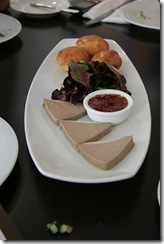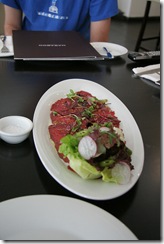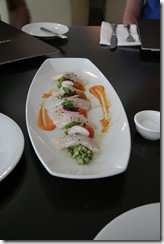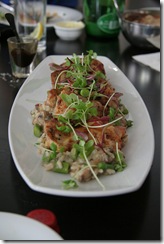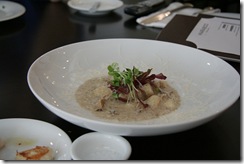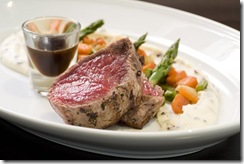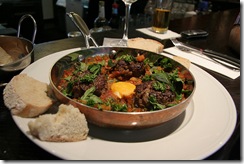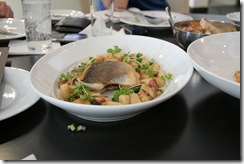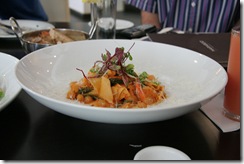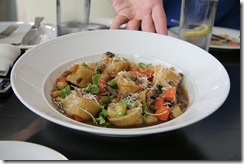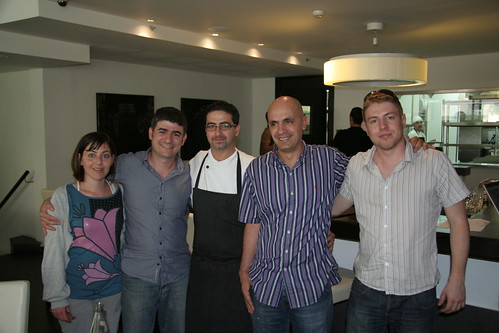A Visit to Maraboo, Restaurants as Tribes in the Digital Age
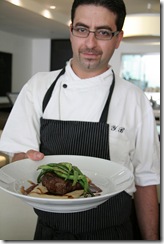 Its a rare occasion that I go out of a restaurant (and I go to many) with an absolute feeling of “WOW!”… This Monday was one of these occasions.
Its a rare occasion that I go out of a restaurant (and I go to many) with an absolute feeling of “WOW!”… This Monday was one of these occasions.
On the past couple of week we’ve been working on a new, food related venture (more details on that in the very near future). Apparently, we raised enough twitter noise to get noticed, and thanks to Maya we’ve been contacted by Channel 10 and invited to visit Maraboo as part of the promotions for the season finale of the Israeli version of Icon Chef featuring the Maraboo team vs. the Hudson Brasseri you should tune in on Channel10 this Thursday (April 30, 2009) at 21:00.
At the restaurant we met the owners*,* Haim Amshalom and Chef Yoav Bar who showed us around the place and introduced us to each and every dish we got. We had a great time…

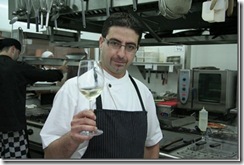
* On the left Haim Amshalom and on the right Chef Yoav Bar
The fact that were at Maraboo as bloggers, that Maraboo has its own group on Facebook and that its owner is on Twitter made me think about the opportunities the web has to offer restaurants.
The Web is About Openness… Can Restaurants be Open?
The Web is about openness, its about empowering online communities and individuals to create, remix, share and make things themselves.
Restaurants are essentially small communities, or tribes of people with a common interest (in our case food) a leader (the Chef) and a platform to communicate (the restaurant). They can use the web as a platform to develop a personal relationship with its customers and the facility itself (the restaurant) as a social hub.
Restaurants, like any other business, can use Twitter or a Facebook group etc. to keep in touch with their diners but what’s more interesting is that they can actually use it to become a platform, or a hub, for its tribe members (diners) to interact and their common interests (food).
The Menu as a Wiki. Ok, the Chef builds the menu and we wouldn’t want to change that… that’s the whole point of the restaurant. But what if he could collaborate or include the diners into that process?
Maybe people think the Calamari dish is lacking? or maybe they just hate Calamari… wouldn’t you want to know?
It can put recipes online and invite diners to make suggestions. Some users might go through the trouble of preparing the dish at home. They might make all sort of adaptations and report back, discuss them online with their fellow diners (For example, a lot of people tried to make the same wings sauce as Dixie’s famous sauce and they were discussing it online). Maybe some of these adaptations are actually worth putting in the menu?
In fact, what if browsing a restaurant’s menu was more like browsing Amazon?
You could see which dishes people like more, what they think of it. You could see what your friends like (or not) or filter dishes by “spec” (like calories intake?).
Restaurants can become the stars. The popularity of kitchen-based reality shows is soaring (heck, we’re here as a promotion for such a show) because there’s a public interests in restaurants, in chefs, in food making.
Chefs could blog about their taste, inspirations, trends they see, cooking practices and tutorials and become local stars (take Gary Vaynerchuk’s for example)
Restaurant as a community meeting place. People in online communities like to meet. Just see all the Tweetup events where communities of people who know each other from talking on Twitter gather to talk offline. As its community members all share a passion for food, a restaurant can organize bakeups– where people could learn about cooking\cook. Maybe even have a community member as Chef for a night…
Final Thoughts and.. Food Photos!
As Seth Godin puts it, managing a tribe is a whole different concept than the old way of just managing a brand using traditional PR:
Tribe management is a whole different way of looking at the world.
It starts with permission, the understanding that the real asset most organizations can build isn’t an amorphous brand but is in fact the privilege of delivering anticipated, personal and relevant messages to people who want to get them.
It adds to that the fact that what people really want is the ability to connect to each other, not to companies. So the permission is used to build a tribe, to build people who want to hear from the company because it helps them connect, it helps them find each other, it gives them a story to tell and something to talk about.
Anyway, I can’t end this post without some photos of some of the amazing dishes we had at Maraboo:
And finally, the entire dinning team 🙂


